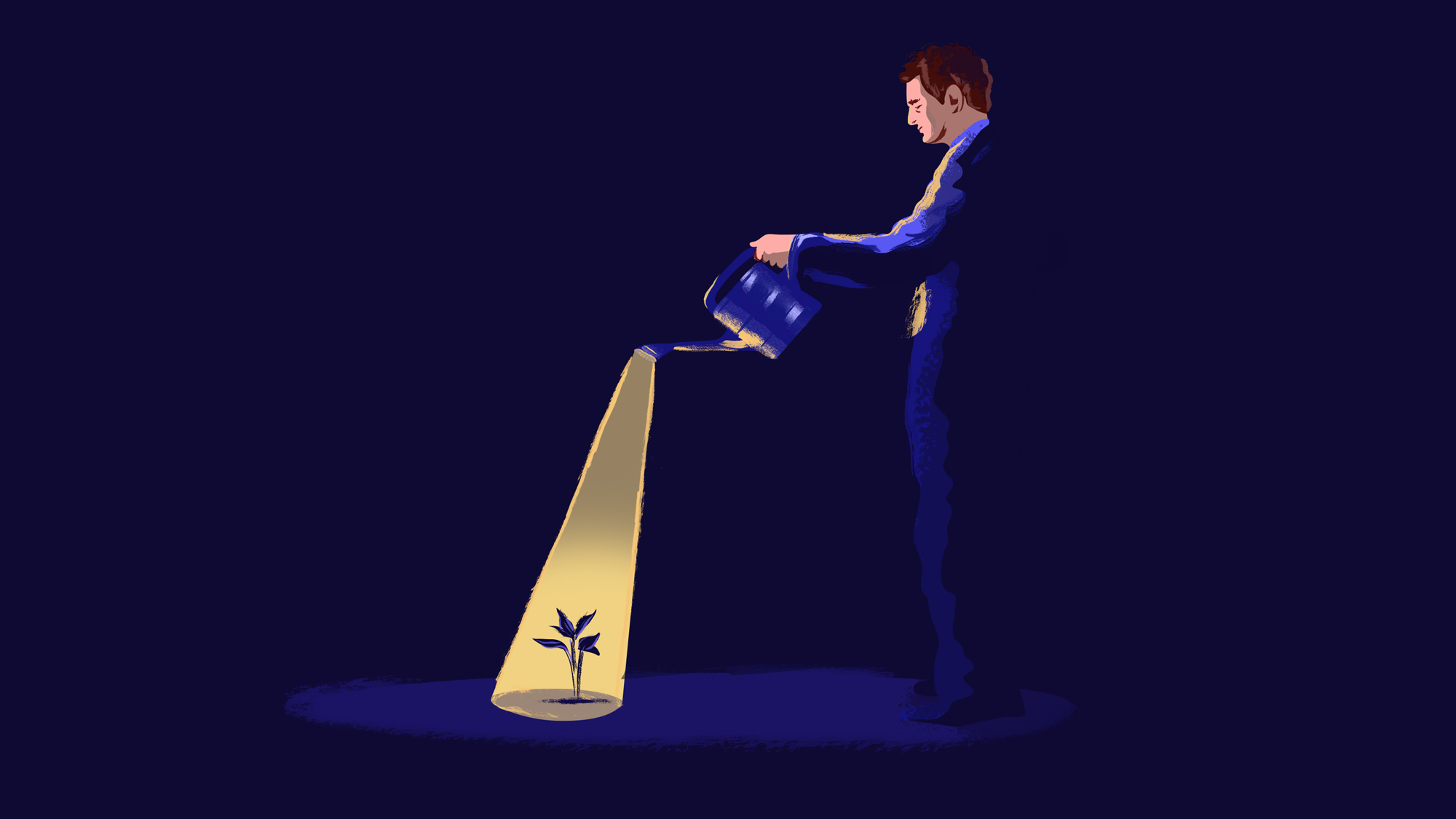PLANTS ARE CRUCIAL to human survival, even when there’s no sunlight. But dealing with darkness is second nature for someone with a green thumb like Howard Levine, chief scientist for NASA’s International Space Station (ISS) Research Office. Nurturing leaves outside Earth’s atmosphere is not only important for cycling nutrients and water during future space voyages, but also helps alleviate the cooped-up feeling astronauts experience. “On the ISS, you’re up there for six months at a time. People often say it’s like being in the bathroom with six of your best friends,” says Levine, who has been growing plants in orbit for decades.
Space might be an extreme example, but cramped, dark dwellings exist on the ground too. Keeping your houseplants alive in windowless rooms, in shadowy corners, or during short winter days can be a challenge. Luckily, there are strategies to help your flora stay lush and verdant, even when their sunny source of energy is limited.
Mini indoor greenhouses
Darkness usually means a dip in natural heat. Colder temperatures slow our bodies down, and that’s true for plants too. The chemical reactions that control their growth decelerate and sometimes stop.
In Iceland, horticulturist James McDaniel uses geothermal heat in his greenhouses to protect his plants from the wintry cold. Each of the structures has holes beneath that stretch deep to a pocket of steaming-hot water, he explains. “You can funnel that [steam] into the pipes through the greenhouse and use natural ventilation to keep the temperature a set range.”
But you don’t need volcanic energy to run a mini indoor greenhouse, which can be as simple as a repurposed IKEA cabinet. A heater can add warmth, although you might want to pair it with a humidifier to keep from drying your houseplants out. For individual plants, glass dome cloches can trap heat from limited sunlight and also enclose water vapors, which protect plants from the crisp air conditioner in the summer and the prickly heater in the winter.
Grow lights
Plant grow lights provide an easy and accessible energy boost in dim or pitch-black spaces. These specialized beams sport different features, colors, and prices. LEDs, for instance, are the cheapest and most energy-efficient option, using about a third of the electricity of old sodium lightbulbs.
While most devices stick to a warm white spectrum, plants respond differently to various illuminating hues. In Levine’s experiments on Earth, red light worked well for the slender flowering plants Arabidopsis. But in the ISS’s weightless environment, they stretched into funny shapes until he started adding blue lights. He eventually found a middle ground and doused the plants in green light at the request of astronauts who missed the familiar color.
Bright surfaces
If electricity is a limiting factor, you can try to reflect light with mirrors or aluminum foil. Even brightening up your space with white decor, like a light-colored tablecloth, will cast a little glow onto your plants. While it’s not comparable to using a grow lamp or the sun (reflections don’t deliver as much energy), it could offer plants an extra boost.
The makeup of your indoor garden will dictate how much brightness you need to add, Levine explains. Some flora, including lettuce and tomatoes, need more light than those like Arabidopsis; new seedlings need less light than fully grown plants. As you choose your seeds and seedlings, research their native ranges to learn how much sunshine they’d naturally get.
Plants are ultimately adaptable. They can stretch their stems toward available light sources or produce extra chlorophyll, the pigment that absorbs whatever luminescence is available. “Even though they may not be getting all the light that they would like for optimum growth, they’ll still grow,” says Levine. With only a little extra help, you and your plants can conquer the darkness.
Read more PopSci+ stories.

